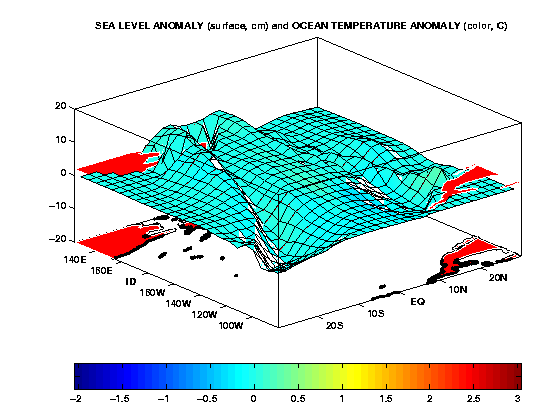
Fig 1. East-west cross section of the equatorial Pacific, showing the relation between the strength of the sea surface, the ocean topography, and the thermocline depth.

Fig 2. Model simulation of temperature and sea height anomalies during El Niño.
|
E. Linacre and B. Geerts |
6/'98 |
Fig 1 shows the effect of the Trade winds on the slope of the surface of the equatorial Pacific ocean and on the depths of the thermocline beneath (1). The changes imply the indicated longitudinal movements of the near-surface water along equator across the Pacific Ocean.
|
Fig 1. East-west cross section of the equatorial Pacific, showing the relation between the strength of the sea surface, the ocean topography, and the thermocline depth. |
Fig 2. Model simulation of temperature and sea height anomalies during El Niño. |
The situation in Fig 1 (a) is typical of La Niña; (b) represents El Niño conditions. Clearly the variation of the strength of the surface winds affects the ocean topography and the SST. The SST, in turn, affects the wind distribution: near the equator surface air converges towards the warmer water. As the warm water spreads towards the central and eastern equatorial Pacific during an El Niño event, convection, low-level convergence and weakened trade winds follow. El Niño is not an example of the atmosphere forcing the ocean, nor the SST forcing the atmosphere, but rather an example of air-sea interaction (Note 11.A). The combined sea surface and SST evolution is shown in Fig 2.
Reference
(1) Wyrtki, K. 1985. Research on El Niño. WMO Bull. (World Meteor. Organ.) 34, 43-4.